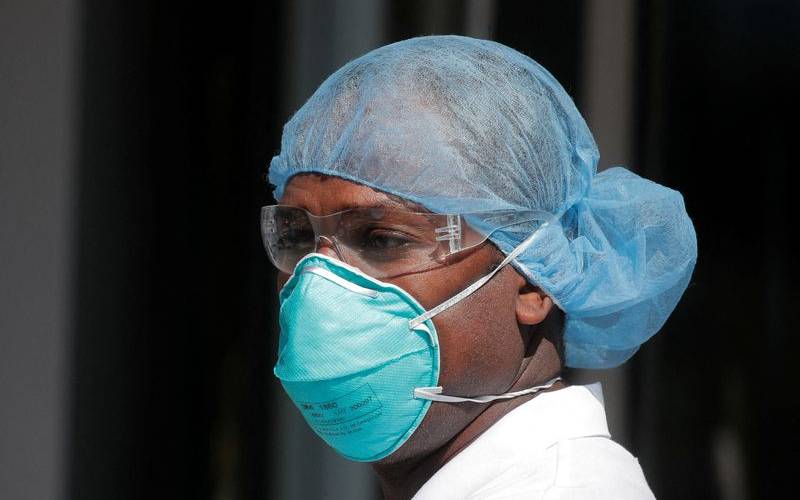Lorem ipsum dolor sit amet adipisicing elit. Sapiente fuga nisi rerum iusto intro.
Lorem ipsum dolor sit amet adipisicing elit. Sapiente fuga nisi rerum iusto intro.


President William Ruto is facing mounting pressure to reassess his administration’s revenue mobilisation strategies after data from the National Treasury revealed significant tax collection shortfalls.
National Treasury Cabinet Secretary John Mbadi announced Wednesday that by the end of October, the State’s total revenue collection fell short by Sh73.7 billion, primarily due to a Sh48.1 billion shortfall in ordinary revenues or taxes.
The figures show that total revenue amounted to Sh854.5 billion as of October, against a target of Sh928.2 billion.
“By end October 2024, revenue collection amounted to Sh854.5 billion against a target of Sh928.2 billion, resulting in an underperformance of Sh73.7 billion,” said Mbadi.
“The underperformance was on account of a shortfall in ordinary revenue of Sh48.6 billion and ministerial A-i-A (appropriations-in-aid) of Sh25.1 billion.”
This shortfall comes despite the Kenya Revenue Authority’s (KRA) aggressive tax collection efforts and highlights the challenges facing the Ruto government’s fiscal consolidation plan, which aims to curb public debt and enhance revenue collection.
Expenditure trends further reflect these financial constraints, with total expenditures falling Sh101.9 billion below target. This was largely attributed to reduced disbursements in recurrent expenditure and the County Equitable Share.
“Expenditures by end October 2024 were below target by Sh101.9 billion due to lower-than-expected disbursements towards recurrent expenditure and the County Equitable Share,” said Mbadi.
“Fiscal operations by end of October 2024 resulted in an overall deficit, inclusive of grants, of Sh222.9 billion (1.2 per cent of GDP) against a target of Sh249.2 billion (1.4 per cent of GDP).”
The underperformance in tax collections was recorded across all major tax categories, prompting the Treasury to revisit its revenue mobilisation strategies.
Mbadi stated that the government plans to implement a revamped Medium-Term Fiscal Policy to support Kenya’s economic growth. This will include a “comprehensive revenue mobilisation plan” focused on broadening the tax base, minimising unnecessary tax expenditures, and leveraging technology to enhance compliance.
Additionally, the government aims to increase non-tax revenues from services provided by ministries, departments, and agencies.
As part of these efforts, the administration plans to roll out the Medium-Term Revenue Strategy (MTRS), which seeks to progressively strengthen tax revenue mobilisation to 20 per cent of GDP over the medium term.
Mbadi also noted plans to improve governance and efficiency within state-owned enterprises (SOEs) and explore public-private partnerships (PPPs) for commercially viable projects.
Looking ahead, the Ruto government has set ambitious targets for the fiscal year 2025/26, aiming for total revenues of Sh3.516.6 trillion (17.6 per cent of GDP), up from Sh3.060.0 trillion (16.9 per cent of GDP) in the 2024/25 financial year.
Ordinary revenue is projected to rise to Sh3.018.8 trillion, up from Sh2.631.4 trillion in the current fiscal year, further intensifying pressure on KRA to deliver.
“The focus of the FY 2025/26 budget will be on implementing priority programmes under the Bottom-Up Economic Transformation Agenda (BETA) by increasing investments in agricultural transformation, MSME growth, housing and settlement, healthcare, and the digital superhighway,” said Mbadi.
“This will be achieved through a value chain approach under five clusters: Finance and Production Economy; Infrastructure; Land and Natural Resources; Social Sectors; and Governance and Public Administration.”
Stakeholders across various sectors have urged the government to adopt innovative measures to bolster the economy and ensure sustainable growth.
Optimism
Despite the challenges, Mbadi expressed optimism about Kenya’s economic outlook. The economy is projected to grow at a moderate pace of 5.2 per cent in 2024 and 5.4 per cent in 2025, compared to 5.6 per cent in 2023.
This growth, he said, will be supported by “strong domestic demand, investments in agriculture and manufacturing, favourable weather conditions, a robust service sector, stable macroeconomic conditions, ongoing infrastructure projects, and sustained business confidence.”
However, Mbadi acknowledged that Kenya still faces significant debt vulnerabilities, which constrain fiscal space and limit the implementation of growth-oriented programmes.
“To mitigate these risks and sustain economic growth, the government will implement sound macroeconomic policies, promote private sector investment, and prioritise climate-resilient development,” said Mbadi.

To personalise content, tailor ads and provide best user experience, we use cookies. By using our site, you agree to use our cookies. Privacy Policy
Subscribe to our newsletter and stay updated on the latest developments and special offers!



